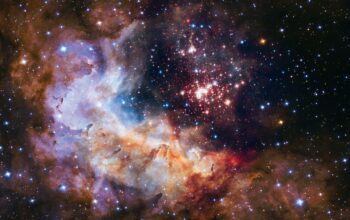The phenomenon of nuclear reactions at the center of the Sun is a cornerstone of astrophysics, encapsulating the intricate interplay between high temperatures, immense gravitational forces, and quantum mechanics. To appreciate why these nuclear reactions are exclusive to the Sun’s core, it is essential to delve into several pivotal concepts: stellar structure, nuclear fusion, temperature and pressure conditions, and the binding energy of atomic nuclei.
In stellar astrophysics, stars are classified according to their structural layers. The Sun, like other stars, possesses distinct zones: the core, radiative zone, and convective zone. The core is the Sun’s innermost layer, where the temperature reaches an astonishing 15 million degrees Celsius. The pressure at these depths is equally impressive, approximately 250 billion atmospheres. Such extreme conditions render the core not just a region of energy generation but a unique environment where the laws of physics drive the process of nuclear fusion.
Nuclear fusion is the fundamental reaction powering the Sun. At its core, this process involves the merging of lighter atomic nuclei, primarily hydrogen isotopes, to form heavier elements, notably helium. The fusion of hydrogen atoms into helium releases colossal amounts of energy, adhering to the famous mass-energy equivalence principle articulated by Einstein. When light nuclei combine, a fraction of their mass is converted into energy, as expressed in the equation E=mc². This energy is emitted in the form of gamma rays and provides the radiant heat and light we observe from Earth.
The specific conditions necessary for nuclear fusion to transpire are quintessential: high temperature and high pressure. At the extreme temperatures found in the Sun’s core, hydrogen nuclei possess sufficient kinetic energy to overcome the electrostatic repulsion between them, known as the Coulomb barrier. It is this barrier that largely dictates the feasibility of nuclear reactions. Under lower temperature conditions, protons would simply repel each other, preventing fusion from occurring. Hence, fusion is only plausible within the core of the Sun, where such temperature and pressure conditions are met.
Another compelling aspect to consider is the quantum tunneling effect, a phenomenon that occurs at quantum mechanical scales. Even at energies typical of the solar core, not all protons possess the requisite energy to surmount the Coulomb barrier. However, through the mechanisms of quantum tunneling, particles can penetrate the barrier—a process that significantly increases the probability of fusion occurring at lower temperatures than classical mechanics would predict. This quantum phenomenon is integral to understand the efficiency and viability of fusion in stellar environments.
Moreover, the Sun’s core serves as the primary site for nuclear reactions due to the binding energy of atomic nuclei. Binding energy refers to the energy required to disassemble a nucleus into its constituent protons and neutrons. Nuclei with a higher binding energy are generally more stable, and fusion tends to occur most readily among light elements, such as hydrogen, which are converted into helium. The binding energy landscape illustrates why the core, filled with hydrogen, is the most conducive environment for these reactions to occur. In contrast, the outer layers of the Sun do not exhibit these extreme characteristics needed for fusion.
As one moves outward through the Sun’s radiative and convective zones, the temperatures and pressures drop significantly. These regions primarily facilitate the transport of energy rather than its production. The radiative zone allows energy to propagate outward via radiation, while the convective zone, the outermost layer, employs convection currents to distribute thermal energy. Nuclear fusion does not occur in these layers, primarily due to the insufficient temperature and pressure conditions. It is the unique conditions of the core that make it a viable site for sustained nuclear reactions.
Furthermore, the stability of nuclear reactions occurring at the core is maintained by a delicate equilibrium known as hydrostatic equilibrium—wherein the inward gravitational force is balanced by the outward pressure created by the energy generated from fusion. This balance is a dynamic state, wherein even slight variations in fusion rates can lead to fluctuations in temperature and pressure, ensuring that nuclear fusion remains solely confined to the solar core.
In addition, it’s worth noting that other types of stars exhibit different nuclear processes based on their mass and evolutionary stage. More massive stars may undergo more complex fusion processes, such as the CNO cycle, becoming significant players in nucleosynthesis. However, regardless of the specific reactions, the principle that nuclear fusion predominantly occurs in the core remains universally applicable across stellar structures.
In conclusion, the occurrence of nuclear reactions exclusively at the center of the Sun can be attributed to a confluence of factors: the extreme temperature and pressure conditions, the quantum tunneling effect that facilitates fusion, and the prevailing binding energy that designates hydrogen as a primary reactant. The unique environment of the solar core not only makes nuclear fusion feasible but also sustains the myriad processes essential for stellar stability and evolution. Understanding these mechanisms not only illuminates the nature of our Sun but also serves as a critical framework for comprehending the life cycles of stars across the universe.












